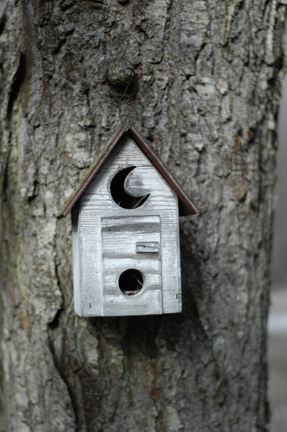
I'm not always good.
Over Easter weekend, Josie’s grandma sent her a beaded bracelet. I was sitting at Josie’s little table, my knees tucked comfortably under my chin, when Josie decided Mommy should wear the bracelet. I pulled my fingers together and she slid it onto my wrist. Then she took one step back, crossed her arms, tilted her head to one side and then to the other and said, “Oh, cute!”
I don’t know exactly when she saw me do that but it was clearly me. No question. We’ve moved into the mimic phase. Speaking of little mimics, I have a funny story to share: one day when my sister went to pick up her two-and-a-half-year-old from daycare, my niece pulled a baggie of snacks out of her bag, held it up and said, I kid you not, “These aren’t my f*cking goldfish.” Gee, I wonder where she picked up that sentence construction and vocabulary. Ah, I do love that story.
My point: I’ve been trying to be a good girl. I try not to curse… often, I wash my hands frequently, and I try to eat well and get plenty of sleep.
I haven’t always been a good eater. I was on an elimination diet – no gluten, dairy, soy, sugar, egg or nuts – when I was diagnosed with cancer. I had chronic abdominal pain and gi problems and I thought of food as something that made me sick. I ate plain chicken and steamed vegetables. I drank distilled water. That was it. I was all knees and elbows and weighed 30 pounds less than I do now.
After my cancer diagnosis, a nutritionist pointed out that if I didn’t start eating, and stop losing weight, I wouldn’t be able to get chemo. And then where will you be? Not much later, I saw a naturopath who told me the most important things I could do were eat and sleep.
These two statements revolutionized my approach to health. I had always thought of diet and nutrition as vaguely important, but in my previous healthier days, I ate primarily for pleasure or to fill my stomach. Gradually, I began to think of eating as an opportunity to stay healthy through chemo and to boost my immune system.
Even when I got busy and run-down from treatment, my goals were clear. Meal planning, grocery (and sometimes handbag) shopping, and cooking, activities that used to be conducted on a time available basis, were suddenly worth cancelling plans to accomplish.
Let’s just stop there and think about this: cancelling plans so you can go to the grocery store.
Is there anything more important than your health? Eating and sleeping, these are the skills I want my little mimic to learn.
Now tell me about you. Do you make eating and sleeping priorities? Have I told you how much I love it when you leave me comments? Have I mentioned how cute you look today?








